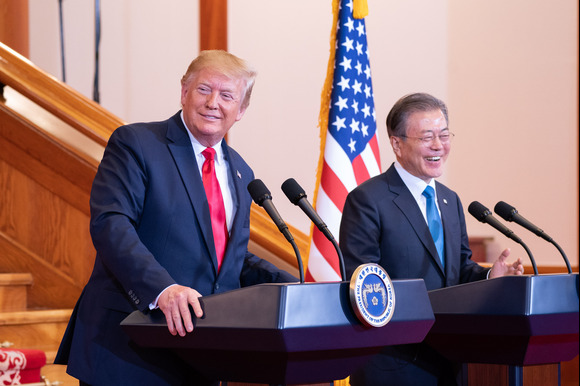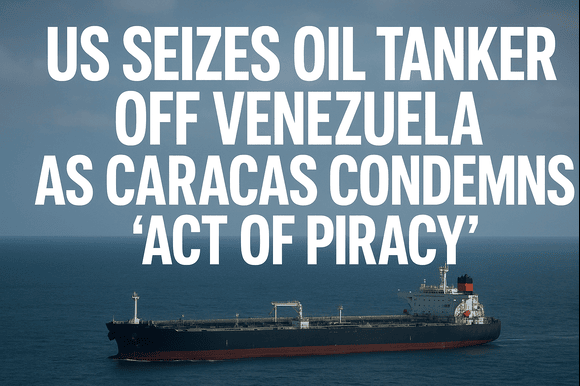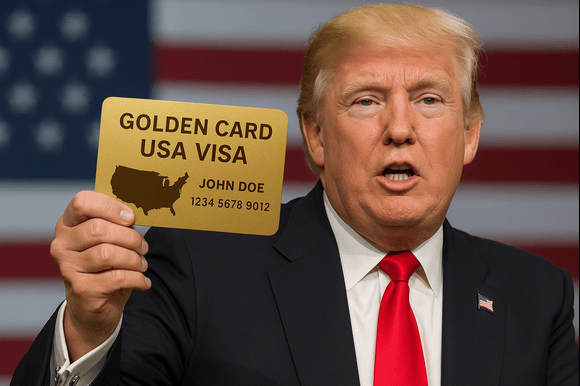
The White House from Washington, DC
The United States and South Korea have reached a wide-ranging trade agreement following high-level discussions between their leaders, officials from both sides confirmed.
South Korea’s presidential aide Kim Yong-beom said the two nations had agreed to lower reciprocal tariffs from 25% to 15%, reaffirming an arrangement reached earlier in the year.
Under the deal, South Korea will invest $350 billion in the US — comprising $200 billion in cash investment and $150 billion earmarked for shipbuilding, Kim added.
Trump Hails “Tremendous Meeting” with Lee Jae Myung
US President Donald Trump, currently on a week-long visit to Asia, described the deal as “pretty much finalised” during a dinner that followed nearly two hours of talks with South Korean President Lee Jae Myung.
“We had a tremendous meeting today with South Korea,” Trump said, adding that “a lot was determined.” He also noted that the two sides had discussed national security and “came to a conclusion on a lot of very important items.”
Before the talks, both governments had tempered expectations of a breakthrough, disappointing many in South Korea’s electronics, semiconductor, and auto industries that had hoped for clarity amid the ongoing tariff uncertainty.
Tariffs Reduced Amid $350 Billion Investment Commitment
Earlier this year, the Trump administration imposed a 25% tariff rate on South Korean imports. However, President Lee successfully negotiated a reduction to 15% after Seoul pledged to invest $350 billion in the US and purchase $100 billion worth of liquefied natural gas.
Despite this, Washington later increased its demands, with President Trump pressing for more direct cash investments on American soil as part of the trade discussions.
The US and South Korea have long been close allies, but relations became strained recently following the detention of hundreds of South Koreans in a US immigration raid last month.
Trump to Meet Xi Jinping Next in Asia
After concluding talks with Seoul, President Trump is scheduled to meet Chinese President Xi Jinping on Thursday during the Asia-Pacific Economic Cooperation (Apec) summit in Gyeongju.
China’s foreign ministry confirmed that the meeting will take place in Busan, just a short flight from the summit city. Trump said he was “looking forward” to the talks, noting that both sides had been “talking a lot over the last month.”
“I think we’re going to have something that’s gonna be very, very satisfactory to China and to us,” he said.
The upcoming meeting will mark the first face-to-face encounter between the two leaders since Trump took office in 2025 and imposed sweeping global tariffs.
Trump Addresses Apec Leaders: “Economic Security Is National Security”
Addressing a gathering of business leaders in Gyeongju, Trump expressed optimism about reaching a trade deal with China, calling it “a good deal for both.”
He also praised the Apec member nations for efforts to reform the global trading system, which he said had been “broken” and in “urgent need of reform.”
“Economic security is national security,” Trump declared. “That’s for South Korea, that’s for any country.”
Ceremonial Welcome: Golden Crown and Grand Order of Mugunghwa
Prior to Wednesday’s talks, President Trump was greeted with full ceremonial honours, including an honour guard and a series of symbolic gifts — among them, a golden crown.
“I’d like to wear it right now,” Trump quipped. He was also presented with the Grand Order of Mugunghwa, South Korea’s highest honour, awarded in recognition of his “contribution to peace on the Korean Peninsula.”
Trump is the first US president to receive the award, the South Korean presidential office confirmed.
North Korea Missile Tests and Regional Tensions
The two leaders held a working lunch followed by a private meeting, which came just hours after North Korea test-fired surface-to-air cruise missiles.
Trump expressed interest in meeting North Korean leader Kim Jong Un but said logistical challenges prevented it during this trip.
Acknowledging the enduring divisions on the peninsula, Trump commented, “We will see what we can do to get that all straightened out.”
Protests and Support in the Streets of Gyeongju
Outside the summit venue, anti-Trump protesters gathered on Wednesday afternoon, chanting slogans against the US president. Police were seen dispersing the crowd and making several arrests.
However, nearby, a larger pro-Trump rally took place, featuring demonstrators voicing anti-Chinese sentiment — a reflection of South Korea’s growing mistrust toward Beijing.
Anti-Chinese rhetoric has become increasingly common in South Korean political discourse, especially after conspiracy theories alleging Chinese interference during former President Yoon Suk Yeol’s tenure gained traction.
A Week of High-Profile Diplomacy in Asia
Trump’s visit to South Korea follows a series of significant diplomatic engagements in the region.
On Tuesday in Japan, he signed a rare earth minerals agreement with Tokyo and endorsed a document proclaiming a new “golden age” in US-Japan relations. The agreement reaffirmed both nations’ commitment to previously negotiated tariff reductions.
Earlier in Malaysia, Trump attended a summit of the Association of Southeast Asian Nations (Asean), where he oversaw a “peace deal” between Thailand and Cambodia, resolving a long-running border conflict that escalated into open fighting in July.




